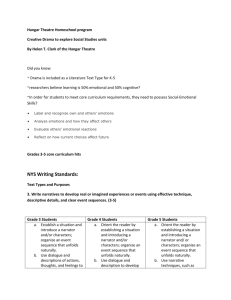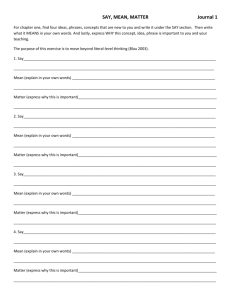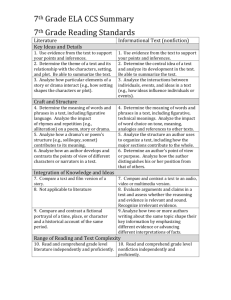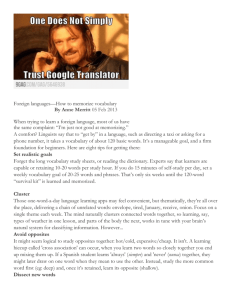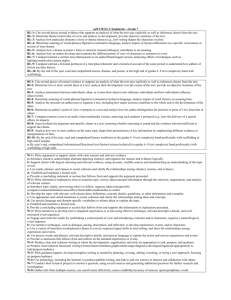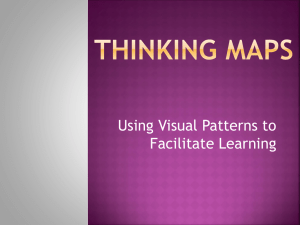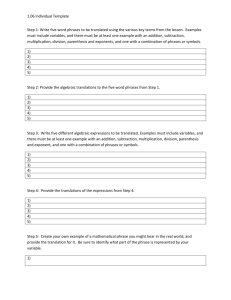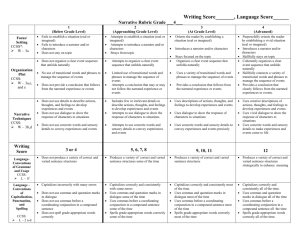File
advertisement
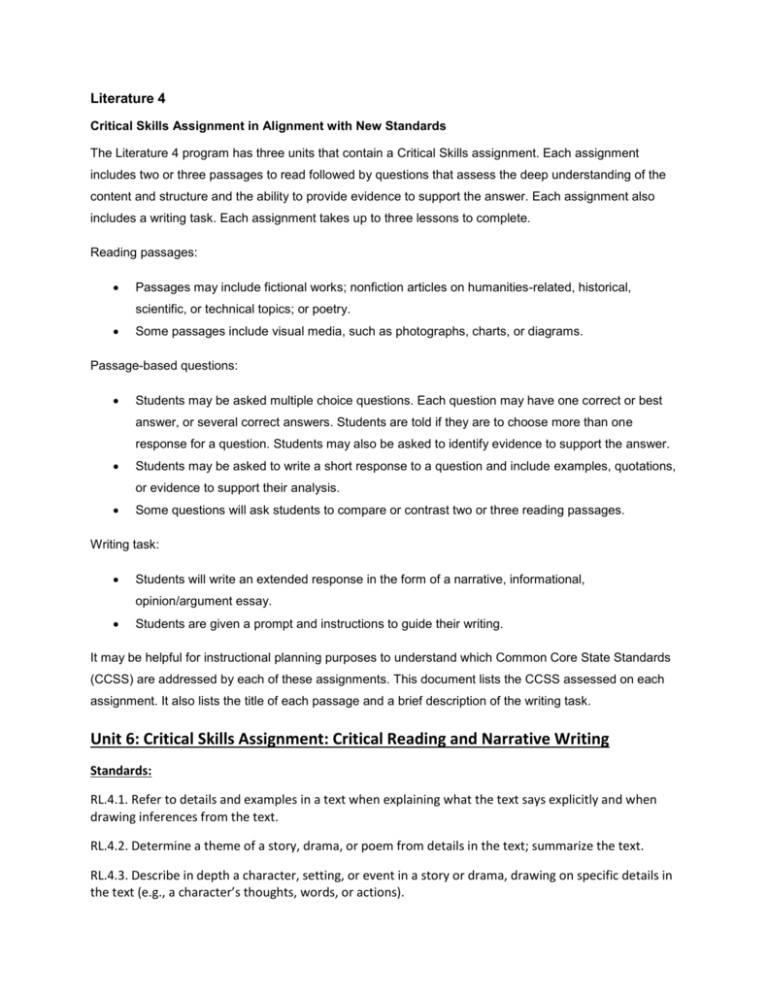
Literature 4 Critical Skills Assignment in Alignment with New Standards The Literature 4 program has three units that contain a Critical Skills assignment. Each assignment includes two or three passages to read followed by questions that assess the deep understanding of the content and structure and the ability to provide evidence to support the answer. Each assignment also includes a writing task. Each assignment takes up to three lessons to complete. Reading passages: Passages may include fictional works; nonfiction articles on humanities-related, historical, scientific, or technical topics; or poetry. Some passages include visual media, such as photographs, charts, or diagrams. Passage-based questions: Students may be asked multiple choice questions. Each question may have one correct or best answer, or several correct answers. Students are told if they are to choose more than one response for a question. Students may also be asked to identify evidence to support the answer. Students may be asked to write a short response to a question and include examples, quotations, or evidence to support their analysis. Some questions will ask students to compare or contrast two or three reading passages. Writing task: Students will write an extended response in the form of a narrative, informational, opinion/argument essay. Students are given a prompt and instructions to guide their writing. It may be helpful for instructional planning purposes to understand which Common Core State Standards (CCSS) are addressed by each of these assignments. This document lists the CCSS assessed on each assignment. It also lists the title of each passage and a brief description of the writing task. Unit 6: Critical Skills Assignment: Critical Reading and Narrative Writing Standards: RL.4.1. Refer to details and examples in a text when explaining what the text says explicitly and when drawing inferences from the text. RL.4.2. Determine a theme of a story, drama, or poem from details in the text; summarize the text. RL.4.3. Describe in depth a character, setting, or event in a story or drama, drawing on specific details in the text (e.g., a character’s thoughts, words, or actions). RL.4.4. Determine the meaning of words and phrases as they are used in a text, including those that allude to significant characters found in mythology (e.g., Herculean). (Variation A only) RL.4.5. Explain major differences between poems, drama, and prose, and refer to the structural elements of poems (e.g., verse, rhythm, meter) and drama (e.g., casts of characters, settings, descriptions, dialogue, stage directions) when writing or speaking about a text. (Variation B only) RL.4.6. Compare and contrast the point of view from which different stories are narrated, including the difference between first- and third-person narrations. (Variations A and B only) RL.4.9. Compare and contrast the treatment of similar themes and topics (e.g., opposition of good and evil) and patterns of events (e.g., the quest) in stories, myths, and traditional literature from different cultures. (Variation C only) RI.4.1. Refer to details and examples in a text when explaining what the text says explicitly and when drawing inferences from the text. (Variation C only) RI.4.2. Determine the main idea of a text and explain how it is supported by key details; summarize the text. (Variation C only) RI.4.3. Explain events, procedures, ideas, or concepts in a historical, scientific, or technical text, including what happened and why, based on specific information in the text. (Variation C only) RF.4.4. Read with sufficient accuracy and fluency to support comprehension. c. Use context to confirm or self-correct word recognition and understanding, rereading as necessary. (Variation C only) W.4.3. Write narratives to develop real or imagined experiences or events using effective technique, descriptive details, and clear event sequences. (Standard for writing prompt) a. Orient the reader by establishing a situation and introducing a narrator and/or characters; organize an event sequence that unfolds naturally. b. Use dialogue and description to develop experiences and events or show the responses of characters to situations. c. Use a variety of transitional words and phrases to manage the sequence of events. d. Use concrete words and phrases and sensory details to convey experiences and events precisely. e. Provide a conclusion that follows from the narrated experiences or events. W.4.4. Produce clear and coherent writing in which the development and organization are appropriate to task, purpose, and audience. (Grade-specific expectations for writing types are defined in standards 1–3 above.) W.4.7. Conduct short research projects that build knowledge through investigation of different aspects of a topic. (Variation C only) W.4.8. Recall relevant information from experiences or gather relevant information from print and digital sources; take notes and categorize information, and provide a list of sources. (Variation C only) L.4.3. Use knowledge of language and its conventions when writing, speaking, reading, or listening. a. Choose words and phrases to convey ideas precisely.* (Variations A and C only) L.4.4. Determine or clarify the meaning of unknown and multiple-meaning words and phrases based on grade 4 reading and content, choosing flexibly from a range of strategies. a. Use context (e.g., definitions, examples, or restatements in text) as a clue to the meaning of a word or phrase. (Variations B and C only) b. Use common, grade-appropriate Greek and Latin affixes and roots as clues to the meaning of a word (e.g., telegraph, photograph, autograph). (Variation C only) L.4.5. Demonstrate understanding of figurative language, word relationships, and nuances in word meanings. a. Explain the meaning of simple similes and metaphors (e.g., as pretty as a picture) in context. (Variations A and B only) b. Recognize and explain the meaning of common idioms, adages, and proverbs. (Variation C only) c. Demonstrate understanding of words by relating them to their opposites (antonyms) and to words with similar but not identical meanings (synonyms). (Variation B only) L.4.6. Acquire and use accurately grade-appropriate general academic and domain-specific words and phrases, including those that signal precise actions, emotions, or states of being (e.g., quizzed, whined, stammered) and that are basic to a particular topic (e.g., wildlife, conservation, and endangered when discussing animal reservation). (Variation C only)

